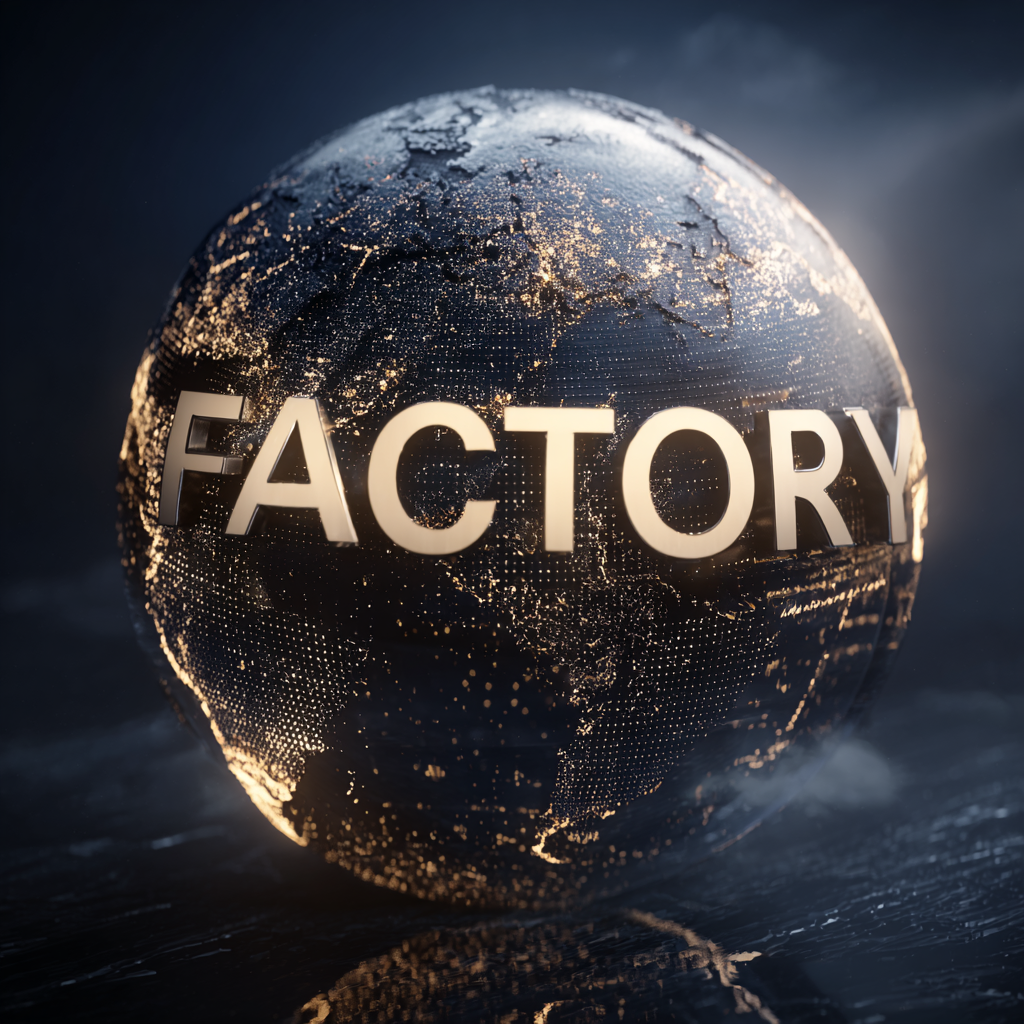
2025 Trends in Global Sourcing: A Comprehensive Comparison of the Best Factory Approaches
In the rapidly evolving landscape of global sourcing, the year 2025 promises to bring significant transformations in factory approaches that companies must navigate to remain competitive. As businesses expand their search for efficiency and sustainability, understanding the best factory strategies becomes crucial. This blog aims to provide a comprehensive comparison of the leading sourcing trends, emphasizing the critical interplay of digitalization and innovative methodologies in factory operations.

By exploring the reasons behind these emerging trends, we will uncover how advancements in technology and changing consumer expectations are reshaping the way factories operate globally. Join us as we delve into the future of sourcing, highlighting the trends that will define successful factory practices in the coming years.
Emerging Technologies Shaping Global Sourcing Strategies in 2025
In 2025, global sourcing strategies are set to be heavily influenced by emerging technologies that reshape traditional practices. Automation and artificial intelligence (AI) will streamline supply chains by enabling real-time data analysis and decision-making. With predictive analytics, companies can anticipate demand fluctuations and optimize inventory levels, reducing waste and enhancing efficiency. This technological integration allows sourcing professionals to focus on strategic initiatives rather than being bogged down by manual processes.
Moreover, the rise of blockchain technology promises greater transparency and traceability in global sourcing. By providing an immutable ledger of transactions, companies can ensure ethical sourcing and compliance with sustainability standards. This is particularly crucial as consumers increasingly demand accountability in product origins. The adoption of smart contracts powered by blockchain will also facilitate faster, safer transactions between suppliers and manufacturers, ultimately leading to more resilient supply chains. As these technologies evolve, businesses that leverage them effectively will gain a significant competitive edge in the global market.

Sustainable Manufacturing Practices: The Environmental Shift in Factory Approaches
As we look toward 2025, sustainable manufacturing practices are no longer just an ethical choice but a necessity driven by both consumer demand and regulatory pressures. A recent report by McKinsey highlights that 67% of consumers are willing to pay more for sustainable products, which reflects a significant shift in purchasing behavior. This shift is prompting factories worldwide to adopt greener technologies and production methods. By integrating sustainable practices, such as energy-efficient machinery and waste reduction strategies, manufacturers can not only mitigate their environmental impact but also drive operational efficiency.
Furthermore, the 2023 Deloitte Global Manufacturing Competitiveness Index indicates that countries that prioritize sustainability in their manufacturing processes are likely to experience a 30% boost in competitiveness by 2025. This trend is evident as companies invest heavily in renewable resources and circular economy principles. For instance, adopting a circular supply chain can reduce material costs and waste by up to 50%, creating a win-win scenario for both the environment and the bottom line. As factories modernize to meet these demands, the emphasis on sustainable practices is set to redefine global sourcing frameworks, ultimately leading to a more responsible and competitive manufacturing landscape.
AI and Automation: Enhancing Efficiency in Global Supply Chains
As we look towards 2025, the impact of AI and automation on global sourcing is set to revolutionize the efficiency of supply chains. The integration of intelligent systems not only streamlines operations but also enhances decision-making processes. By collecting and analyzing vast amounts of data, AI can predict demand fluctuations and optimize inventory management, helping companies tailor their production schedules to meet customer needs without overcommitting resources.
Moreover, automation in manufacturing processes is changing the landscape of global sourcing. Automated systems increase production speed and accuracy, reducing human error and labor costs. Factories equipped with robotics can operate around the clock, maximizing output while minimizing waste. These advancements empower businesses to maintain competitive pricing and improve product quality, ultimately benefiting consumers with enhanced products and services. As we move into this new era, companies that embrace AI and automation will likely lead the way in sourcing efficiency and innovation.
2025 Trends in Global Sourcing: A Comprehensive Comparison of the Best Factory Approaches
| Factory Approach | Technology Utilized | Efficiency Improvement (%) | Cost Reduction (%) | Environmental Impact (Carbon Footprint Reduction) |
|---|---|---|---|---|
| Smart Factories | IoT, AI, Robotics | 30% | 20% | 15% |
| Automated Assembly Lines | Robotics, Machine Learning | 25% | 15% | 10% |
| Sustainable Factories | Renewable Energy, Eco-friendly Tech | 20% | 10% | 25% |
| On-Demand Manufacturing | 3D Printing, AI for Demand Prediction | 15% | 5% | 5% |
The Role of Data Analytics in Optimizing Sourcing Decisions
In the rapidly evolving landscape of global sourcing, the integration of data analytics has become a pivotal element in optimizing sourcing decisions. As companies face increasing pressure to enhance efficiency and reduce costs, data-driven insights empower sourcing managers to make informed choices that align with organizational goals. By analyzing vast amounts of data related to supplier performance, market trends, and customer preferences, businesses can identify the best factory approaches tailored to their unique needs.
Furthermore, leveraging advanced data analytics tools allows organizations to forecast demand accurately, assess risks, and uncover new opportunities for collaboration. This not only streamlines the sourcing process but also enhances the resilience of supply chains in an unpredictable global market. Companies that prioritize data analytics are likely to gain a competitive edge, as they can adapt quickly to changing conditions and respond proactively to potential disruptions, ensuring a steady flow of materials and goods. The future of sourcing lies in the intelligent use of data, making it essential for businesses aiming to thrive in an increasingly complex marketplace.

Future-Proofing Supply Chains: Resilience and Adaptability as Key Focus Areas
In the wake of ongoing global disruptions, future-proofing supply chains has become a pertinent concern for businesses worldwide. A report by McKinsey emphasizes that companies exhibiting high resilience can outperform their competitors by as much as 40% during crises. This calls for a strategic focus on adaptability—an approach that enables companies to respond swiftly to market changes and supply chain volatility. Firms that invest in technologies like AI and blockchain to enhance transparency and agility are likely to enjoy a competitive edge. According to Gartner, 75% of organizations plan to leverage AI by 2025 to mitigate supply chain risks and improve decision-making processes.
Moreover, resilience in supply chains increasingly hinges on diversified sourcing strategies. The same McKinsey report highlights that organizations with diversified suppliers experienced 60% less disruption compared to those reliant on single sources. This shift not only stabilizes procurement but also spreads risk, making firms more agile in facing uncertainties. As businesses prepare for 2025, the ability to pivot and secure multiple supplier relationships will be fundamental to sustaining growth and efficiency, ultimately leading to a more robust operational framework. Embracing these trends will pave the way for more resilient supply chains that can adeptly navigate future challenges.
2025 Trends in Global Sourcing: A Comprehensive Comparison of the Best Factory Approaches
This chart illustrates the key focus areas in global sourcing for 2025, highlighting the importance of sustainability practices, digital transformation, supplier diversification, cost efficiency, and risk management. Each area is rated on a scale from 1 to 10, showing the growing significance of adapting supply chains in an ever-changing global market.
